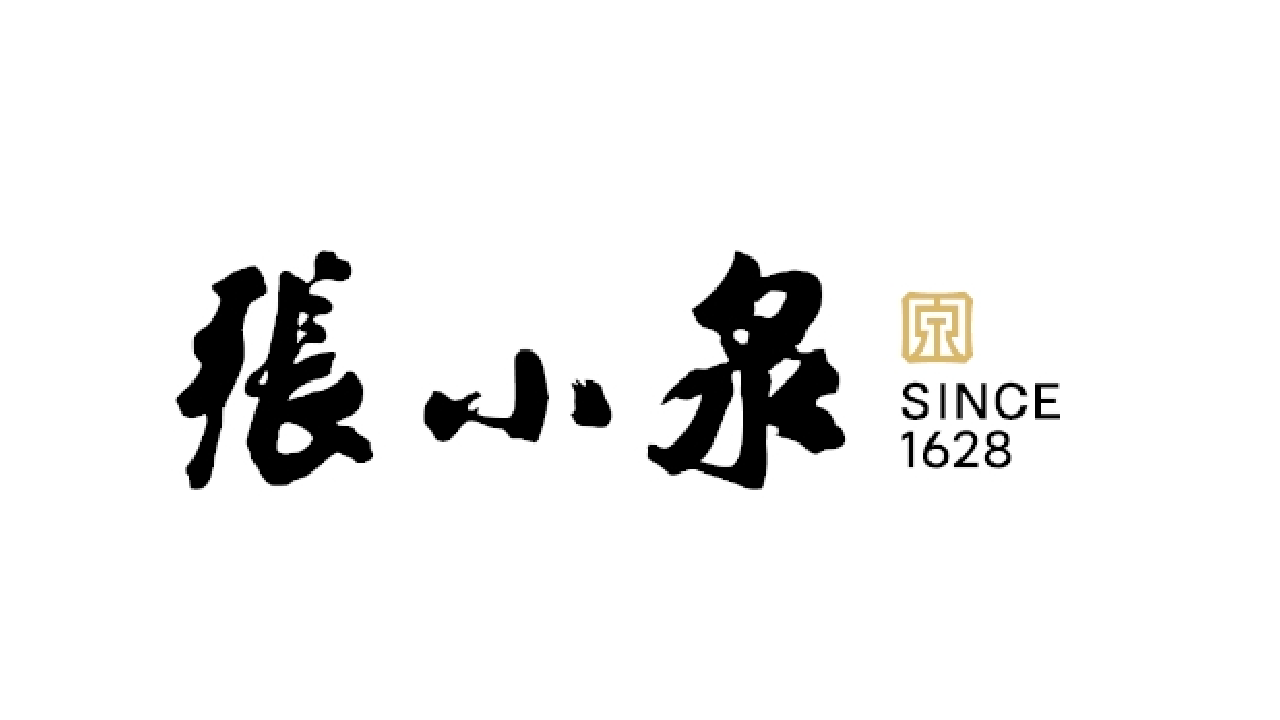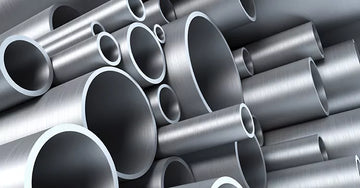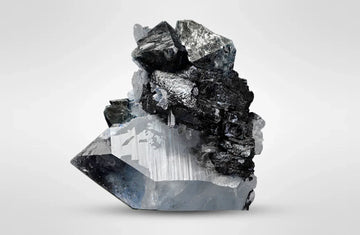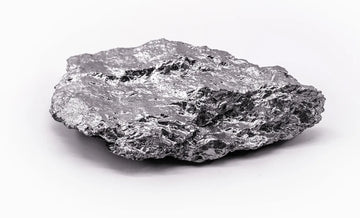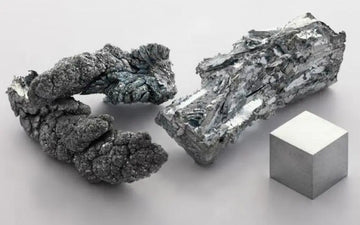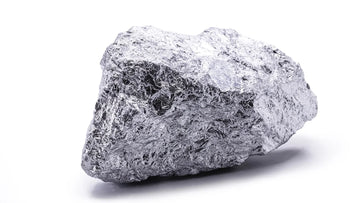In our world, steel is like an ever-present old friend. It holds up skyscrapers, forms the pots and pans in our kitchens, and makes up the skeleton of our cars. It is both hard and obedient, able to bear great weight yet willing to be shaped into countless forms. The qualities of steel remind me of those seemingly ordinary people who possess extraordinary resilience.
The Soul of Steel
At its core, steel is nothing more than iron combined with carbon. Like life itself, often constructed from the simplest elements yet producing infinite possibilities.
Iron: The Foundation
Iron is the body of steel. Iron alone is soft and easily bent. Like a person who has never faced hardship, it lacks the fortitude that comes through transformation. Iron atoms slide past one another too easily, making it lack the steadfast quality needed for demanding tasks. But when it meets carbon, everything changes.

Carbon: The Vital Element
Carbon is like the spirit that enters iron. Though it makes up just a tiny fraction—between 0.12% and 2% by weight—it transforms iron completely. Just as a small experience might fundamentally change a person's character, this small addition of carbon prevents iron atoms from slipping past each other, creating a material that stands firm against pressure.

When there's more carbon, steel becomes harder but also more brittle—just like how a person can become stronger through adversity but might also lose flexibility if hardened too much. Beyond 2.14% carbon, we no longer call it steel but cast iron—a boundary crossed, a transformation too complete.
The Friends of Steel
Steel doesn't just come from iron and carbon. Other elements join this friendship, each bringing its own gift:
Manganese brings hardness and stability, like a friend who offers strength in difficult times.
Chromium wraps steel in an invisible protective layer against rust when added in sufficient amounts. It's the loyal friend who defends you from harm.
Nickel gives steel both strength and flexibility—like that rare person who combines power with gentleness.
Molybdenum helps steel withstand intense heat, like a friend who stands by you when everything around you is burning.
Vanadium strengthens steel by forming carbides and refining grain structure, improving hardness and wear resistance.
Silicon makes steel stronger without making it more brittle, adding strength without sacrificing heart.
Some elements, like phosphorus and sulfur, make steel easier to work with but weaken its inner structure—much like certain compromises in life that offer short-term convenience at the cost of long-term integrity.
The Body of Steel
Steel has its own physical presence in the world:
It is heavy, with a density that gives it substantial weight. You feel its presence when you hold it.
It melts at around 1400°C—not easily broken down by ordinary heat.

It shines brightly when polished, reflecting light like water reflects the sky.
It conducts electricity, allowing energy to flow through it rather than resisting the current.
It can be magnetized, holding onto this invisible force until extraordinary heat breaks the spell.
The Character of Steel
The true nature of steel shows itself when put under pressure:
Steel stands strong against forces that would break lesser materials. This strength comes not from avoiding pressure but from withstanding it.
Good steel can be stretched into wire or hammered into sheets without breaking—it adapts without losing its essential nature.

Steel absorbs energy before breaking. Like a wise person who can take in the hard blows of life before reaching their limit.
But there are trade-offs: the harder steel becomes, the less it can bend without breaking. The most flexible steel is not the strongest, and the strongest is not the most flexible. Every type of steel represents a choice about which qualities matter most.
The Many Faces of Steel
Not all steel is the same. Some contain mostly just iron and carbon—we call this carbon steel. Others contain large amounts of chromium to resist rust—we call this stainless steel.
Carbon steel itself comes in different types:

Low carbon steel is like a young person—flexible, easy to work with, not yet hardened by life, and more common in our world.
Medium carbon steel finds a balance between strength and flexibility.
High carbon steel is like an elder who has become very strong through experience—it holds its shape and resists wear, but it might crack under sudden stress rather than bend.
The Hidden World of Steel
If you could shrink yourself and walk among the atoms of steel, you would see different arrangements depending on how the steel was made. These tiny patterns—invisible to our naked eyes—determine how the steel will behave in our world.

When steel is heated and cooled in different ways, these patterns change. Metallurgists are like life coaches for steel—they create the conditions that bring out different qualities in the material.
The Final Word
Steel's remarkable versatility comes from the interplay between what it's made of and how it's treated. The careful balance of iron, carbon, and various other elements creates a material that can be precisely engineered for countless uses.
The strength, hardness, flexibility, and heat resistance of steel make it uniquely suited to meet diverse needs across our lives. As one of humanity's most important materials, steel continues to evolve as we develop new combinations with enhanced properties.
The relationship between steel's composition, its microscopic structure, and its visible properties shows how small changes can produce materials with dramatically different characteristics—a reminder that in both materials and in life, small differences often lead to profound transformations.
FAQs
What is steel?
Steel is like a friendship between iron and carbon. They come together and create something stronger than either could be alone. This simple marriage of elements creates a material that builds our cities and shapes our lives.
How is steel made?
Making steel is like cooking a special soup. You start with raw iron ore, remove the impurities like stones from rice, add just the right amount of carbon, and sometimes sprinkle in other elements like manganese or chromium. Heat it all until it melts into a glowing liquid, then cool it into solid forms. The way you cool it determines what kind of steel emerges, just as how you raise a child shapes who they become.
How many types of steel are there?
There are thousands of steel types, like there are thousands of personalities in people. But they fall into a few main families: carbon steel, stainless steel, alloy steel, and tool steel. Each has its strengths and weaknesses, its own character and purpose in this world.
How much steel does the world produce annually?
The world makes about 1.9 billion tons of steel each year. Imagine a tower of steel weighing as much as 190,000 Eiffel Towers. That's how much we create every year, building our modern civilization one beam at a time.
What is smart manufacturing?
Smart manufacturing is when machines begin to think and talk to each other. Computers watch over the steel as it's born, adjusting temperatures and mixtures without human hands. It's like having a thousand eyes and minds working together to create perfect steel, reducing waste and saving energy.
Is steel environmentally friendly and sustainable?
Steel carries both burdens and gifts for our environment. Making new steel needs much energy and creates pollution, like most difficult births. But once born, steel lives a long life and can be reborn endlessly through recycling. We are learning to make it with cleaner methods, like a person who learns from past mistakes.
Can steel be recycled?
Steel never truly dies. It can be melted and reborn infinitely without losing its strength. An old car can become a new bridge, which might later become a skyscraper. Nearly 90% of steel is recovered and given new life, making it one of the most recycled materials in our world.
Which country produces the most steel?
China creates more than half of the world's steel, like a giant forge at the center of our global village. In 2023, they made around 1 billion tons – more than all other countries combined.
Which company produces the most steel?
China Baowu stands as the largest steel maker, producing about 130 million tons yearly. ArcelorMittal follows behind, making about 80 million tons. These giants shape our world, though most people never learn their names.
Who invented steel?
No single person invented steel. It emerged gradually through centuries of human curiosity. Ancient smiths in many lands discovered that iron became stronger when forged with certain materials. The modern steelmaking process came in the 1850s when Henry Bessemer found a way to remove impurities from iron using oxygen, allowing steel to be made in larger amounts for less cost.
Why does steel rust?
Steel rusts because it yearns to return to its original state. The iron in steel meets oxygen and water, and they slowly embrace each other, creating rust. It's nature's way of reclaiming what was taken from the earth. Stainless steel resists this call to return because it contains chromium, which forms an invisible shield against oxygen's embrace.
